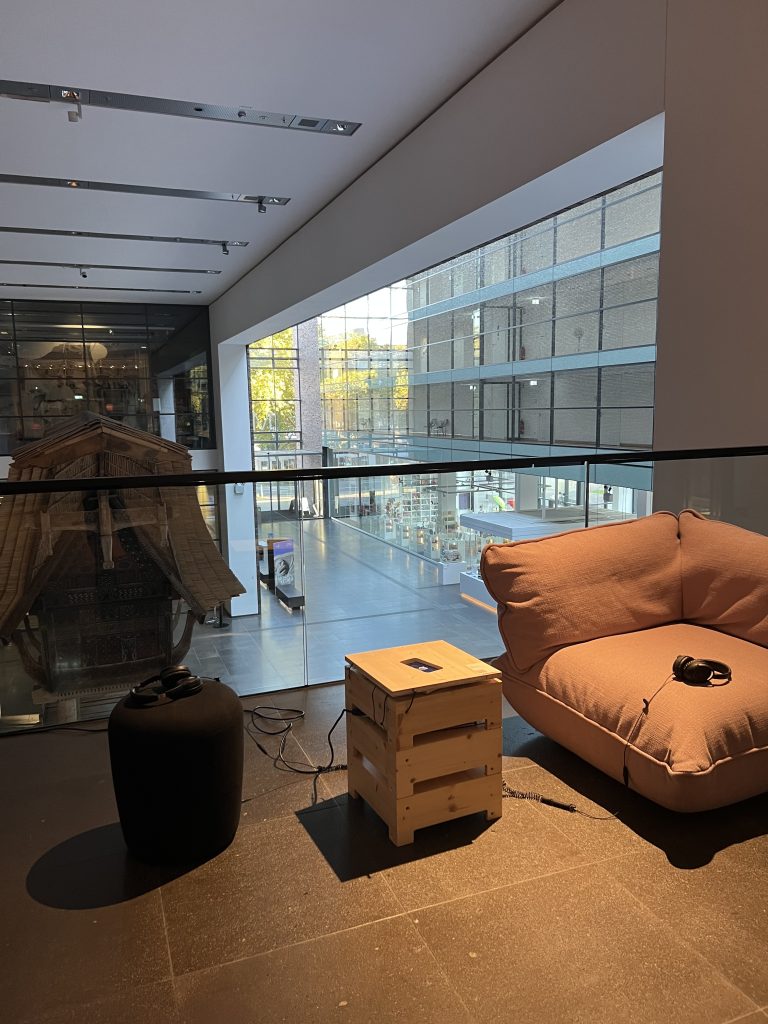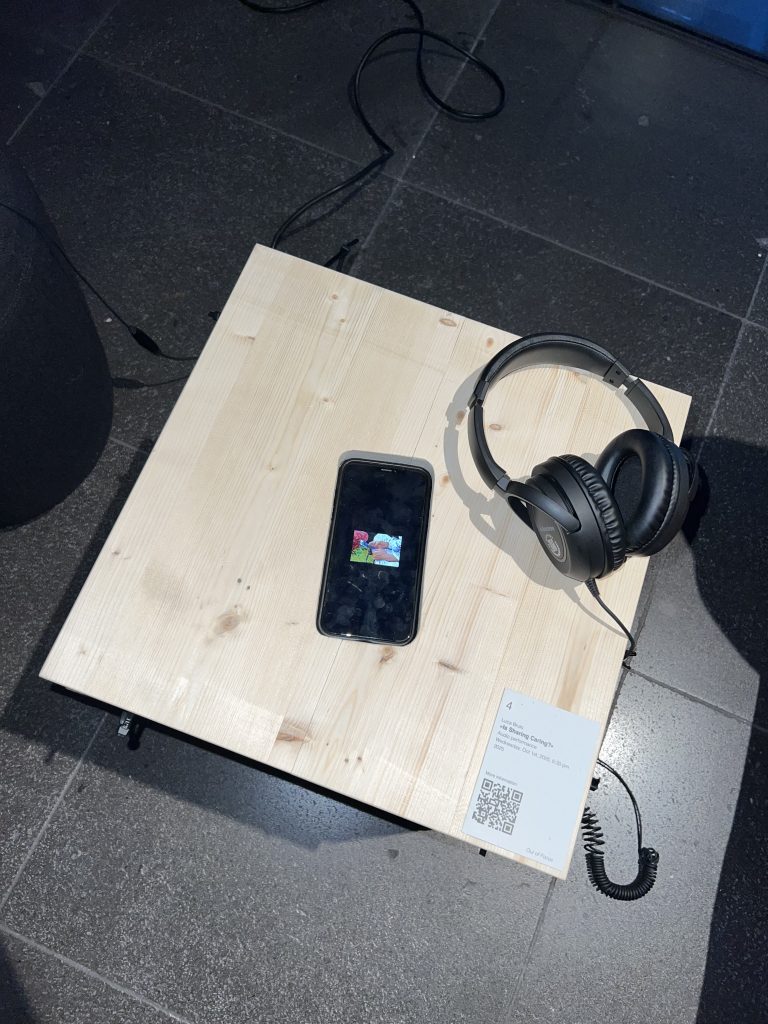The Rautenstrauch-Joest Museum lies on the Cäcilienstraße, a road that connects the city center to one of the iconic bridges spanning the Rhein. The modern building easily blends in with the surrounding environment, plumply positioned on the wide street with its fading yellow trees. The exterior is not as spectacular as its interior, where the grand foyer’s glass cealing brightens up the space and invites visitors to walk around the impressive construction of a Rice barn from the Indonesian island of Sulawesi. On the first floor, overlooking the foyer, is a spacious balcony where my work is positioned. My work, an audio piece of 46 minutes, is part of the exhibition Out of Focus, curated by a lovely team of anthropologists as part of the annual DGSKA (German Association of Social and Cultural Anthropology) conference.
“Out of Focus brings together anthropological and artistic projects that challenge dominant modes of seeing, listening, sensing, knowing, and narrating. Across film, photography, sound, installation, performance, app design, and multiple modalities, the exhibition explores how blurriness, fragmentation, and participation can become tools for resistance, care, and shared meaning-making. (Dreschke et. al 2025)”


I contributed an audio piece titled Is Sharing Caring?, that I presented on a smartphone with two headphones attached. In addition, during the openingnight on Wednesday, I performed the piece live, mixing fieldrecordings with two CDJs and weaving in thoughts over a microphone. Visitors sat down on the floor, the stationed sofa, or stood, tuning in and walking of, getting a fleeting impression of the stories of Muslim women in Chad. In contrast to the panels and plenary sessions that took place at the University of Cologne, where powerpoints and orations were most common, the contributions of the museum invite for a non-ocularcentric ethnographic experience. The formalities are over and attendees move around the space to get informed differently.
I watch the Scold’s Bridle by Corinna Duschl and get thrown back into late medieval patriarchal practices. The uncanny objects amazingly resonate the criminalization of the time. I stroke the colourfol hard fabrics of tapestry from Iran by Simone Pfeifer,Tahereh Aboofazeli, and Arjang Omrani. The experience of touching shifts my attention away from the complexer lifestories behind the carpet and allows to transmit another knowledge form. In their own right, the diverse range of projects forward the cultural understanding of the subject at stake.
My audio piece and performance is about filesharing and digitalization. The work is about listening to networks of students and Muslim scholars. Based on examples of eight months of ethnographic research conducted in N’Djaména, I reflect on the joint wish that exists to share and the digital and physical specifications that encourage why and where Chadians share. Muslim women of the Niassene branch use applications like WhatsApp, TikTok and Xender to distribute files. The objects of attention are panegyrical poems. The filesharing is part of women’s activities in religious spaces. In between field recordings, I relate stories of N’Djamenoise women. By mixing field recordings into a subtle dialogue with empirical contemplations, I explore a sonic, artistic mode of ethnographic telling.
The vantage of various modes of telling in academia is hardly welcomed, and equally is the presentation of these formats in conferences. Commonly visual ethnography gets separated from other anthropological conferences, with films deserving a place at festivals or during separate sessions. Sound somewhat rarely gains stage as well, but silence mostly persists beyond oral presentations. Smell, touch, and movement seem to be completely put in the grave once anthropologists exit the field site. The experimentation with multi-modal formats and the search for a common language therein will resist stagnant anthropology.